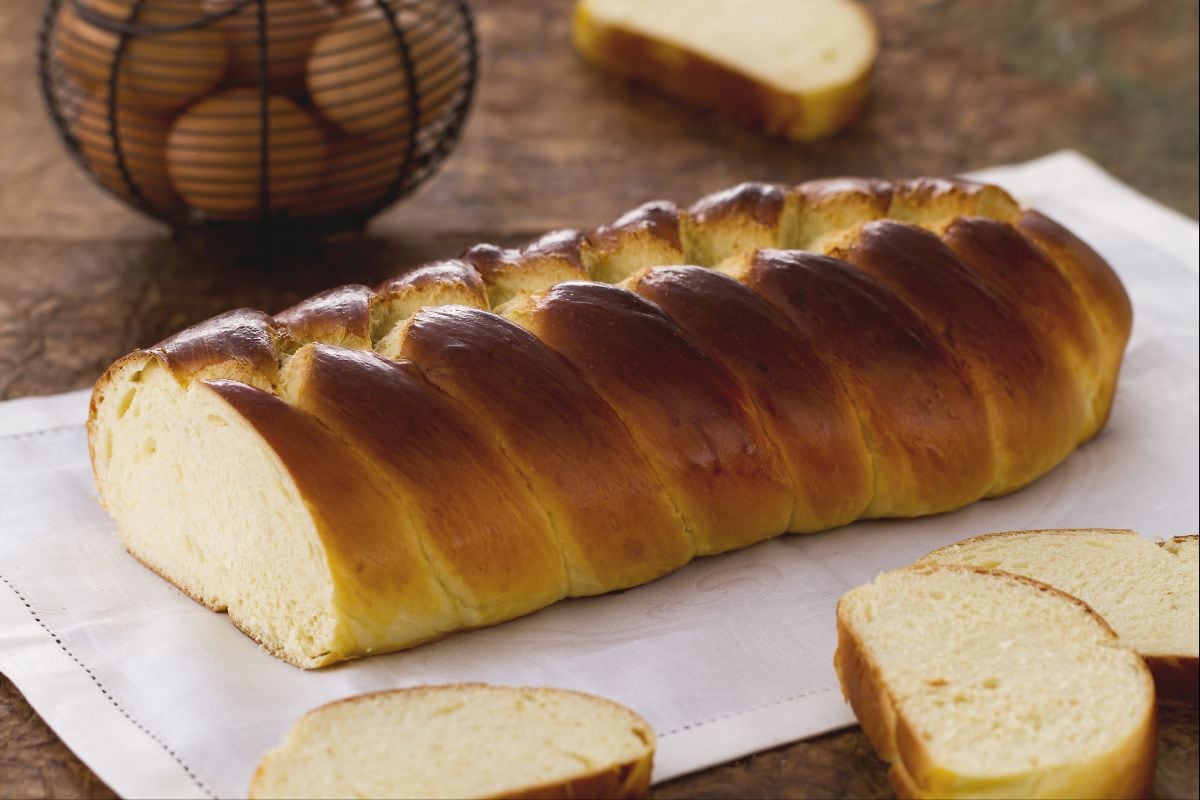How to do blind baking
- Easy
- 40 min

Challah isn't just your regular golden braided loaf. Nope. It's a symbol with deep meaning for Jewish families, especially during Shabbat. And here's the thing, a traditional challah bread is more than just sweet bread. It’s crafted with a deep respect for religious customs. For Shabbat, the challah recipe sticks to some pretty strict rules. I mean, keeping things kosher—like, no dairy mixed in. That’s not random. It's a way to honor the whole no-mixing-of-meat-and-milk part of Jewish law.
The dough? Super moist and soft. And when it bakes, it's all crispy outside, staying nice and tender inside. Kind of like pan brioche, but with its own unique twist. And the table? Well, gathering around it, doing the blessing over wine and bread during kiddush, really brings everyone together—reminding everyone of what truly matters.
Sticking to the original homemade challah recipe is key. Honestly, changing it up can totally take away from the bread’s true meaning. Every family might braid it a bit differently, but the core idea? It stays. This Jewish bread recipe is more than taste—it's about connection and celebration. Some folks even call it Shabbat bread. And you know what? Making it is like a ritual itself. The smell while baking? So sweet and rich. Breaking into that golden crust feels special—especially after a hectic week.
Those who care about kosher baking find this braided bread recipe crucial. For real, following the exact steps and using the right ingredients keeps the tradition alive. Sharing this bread? It's a way of passing down stories, values, and faith—all wrapped up in one beautiful, tender loaf. Whether you’re new to this tradition or it’s been in the family forever, making challah gives you a chance to connect with something much bigger. Plus, enjoying a really really good slice of homemade goodness—that's something everyone can appreciate.
You might also like:

To prepare the challah, start with the starter: in a small bowl, pour the water and dissolve the dry yeast (alternatively, you can use 12 g of fresh yeast) 1. Stir with a teaspoon to dissolve it completely 2. In a larger bowl, put the sifted flour and add the yeast dissolved in water 3.

Work the dough with your hands in the bowl 4, then transfer it to a floured surface and handle it to obtain a soft and homogeneous mixture 5. Place it in a small bowl 6 and let it rise covered with plastic wrap for about 30 minutes.

After the necessary time, the starter will have doubled in volume 7. At this point, dissolve the salt in a small bowl with water 8. Then pour the starter into the bowl of a stand mixer 9.

Add the sugar 10, the honey 11, and start kneading with the K-beater 12.

Gradually add the sifted flour 13 while continuing to run the beaters at medium speed, then also pour in the eggs 14, and when they are fully incorporated, add the egg yolks 15.

When the yolks are incorporated into the dough, add the olive oil in a thin stream 16. Then replace the K-beater with the dough hook and add the water in which you dissolved the salt 17. Continue kneading until you obtain a smooth and soft dough 18.

Form a ball with the obtained dough 19 and transfer it to a bowl 20 to let it rise covered with plastic wrap in a turned-off oven with the light on for at least 3 hours. After the necessary time, the dough will have doubled in volume 21.

Place it on a lightly floured work surface, divide it into 5 pieces, and handle them to obtain 5 strands 22 of the same length and thickness. Now that you have all the strands 23, seal them at one end 24.

At this point, begin to create the challah: separate 3 strands from the other two and braid the strands alternately, starting from the first braid made with the outermost ones (25-26). Continue with the strands immediately more internal 27 bringing the strands over each other.

Continue in this way 28 until you finish the dough 29 and slightly roll the end 30, before folding it under the challah.

Now that the braid is ready 31, transfer it to a baking tray lined with parchment paper and let it rise for at least 30-45 minutes. Once the dough has completed the last rise, you can brush the challah with a beaten yolk with a tablespoon of water, using a kitchen brush 32. Bake the challah in a preheated static oven at 375°F for 30-40 minutes (if using a convection oven, 340°F for 20-25 minutes). Once baked, your challah will be golden, fragrant, and soft, ready to be served 33!